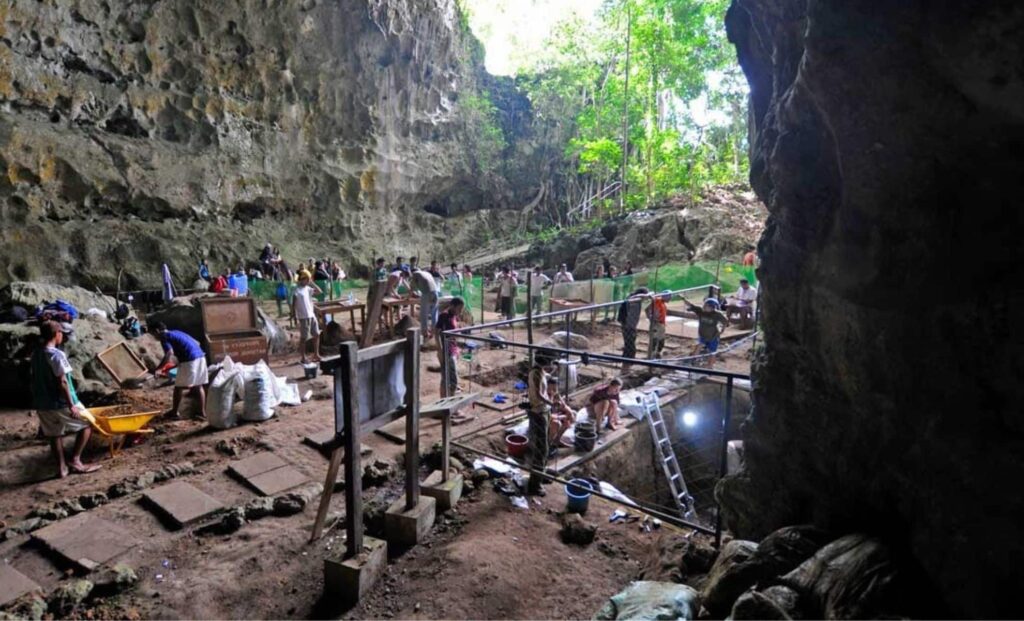A team of archaeologists has uncovered a game-changing discovery in the Philippines. Evidence suggests that, over 35,000 years ago, the islands were home to advanced maritime societies, rewriting our understanding of early human migration and technological innovation. These findings, published in Science Direct, drawn from excavations on Mindoro Island and other nearby locations, suggest that the Philippine archipelago played a significant role in the development of seafaring technologies long before the modern age.
The Maritime Mastery of Ancient Filipinos
What sets this discovery apart is the evidence of advanced maritime skills that these early Filipinos exhibited. For years, historians viewed Southeast Asia’s islands as isolated, with early human populations disconnected from each other by vast stretches of water. But the artifacts uncovered by researchers, particularly in Mindoro, suggest otherwise. These ancient communities were expert navigators, using the sea as a highway rather than a barrier.
The researchers found tools made from stone, bone, and shell, some of which date back over 30,000 years. These tools were not just used for hunting or gathering—they show clear evidence of fishing techniques designed to catch large sea creatures like sharks and bonito. This indicates that the people of Mindoro were not just shore-dwellers, but skilled deep-sea fishermen with knowledge of marine ecosystems and the tools to navigate across islands.

Connecting Islands and Cultures
Beyond their seafaring skills, the ancient Filipinos were part of a wider maritime network that spanned the region. Archaeologists uncovered evidence of trade, with tools found in Mindoro that originated hundreds of kilometers away on Palawan. This suggests that these early societies regularly traveled between islands, exchanging goods, knowledge, and perhaps even cultural practices.


One of the most fascinating finds was a 5,000-year-old burial site discovered on Ilin Island. The manner in which the body was laid to rest in a fetal position and covered with limestone slabs resembles burial practices found across Southeast Asia, indicating cultural connections between distant regions. These findings imply that the people of the Philippines were not isolated, but part of a larger, interconnected maritime world.
Rethinking Ancient Human Migration
What these discoveries ultimately tell us is that the oceans were not barriers, but rather conduits for human movement and cultural exchange. Traditional views of prehistoric human migration often depict humans as slowly spreading from continent to continent, avoiding or constrained by the sea. But the evidence from Mindoro and nearby islands paints a different picture: these islands were actively connected, with people crossing vast stretches of ocean to migrate, trade, and share innovations.
In fact, this discovery pushes back the timeline of maritime technology, suggesting that early Filipino seafarers were using sophisticated navigation techniques long before other regions. Without the use of advanced tools like GPS or compasses, these sailors would have relied on celestial navigation, guiding their vessels by the stars, wind, and currents. Their ability to cross open waters and maintain contact with distant communities demonstrates a level of adaptability and resourcefulness that we now know existed much earlier than previously thought.
A Legacy of Innovation
This research reshapes our understanding of early human ingenuity. The Philippine islands, once seen as peripheral in the broader narrative of ancient human development, are now recognized as critical hubs for technological and cultural exchange. The advanced seafaring capabilities of these early societies not only expanded the geographical boundaries of human migration but also laid the foundation for an enduring maritime culture that would continue to evolve for millennia.
As we continue to explore these finds, we’re left with an important question: What else might we discover about the ancient maritime networks of Southeast Asia? This groundbreaking research offers us a glimpse into a world that was far more connected, dynamic, and technologically sophisticated than we ever imagined.

